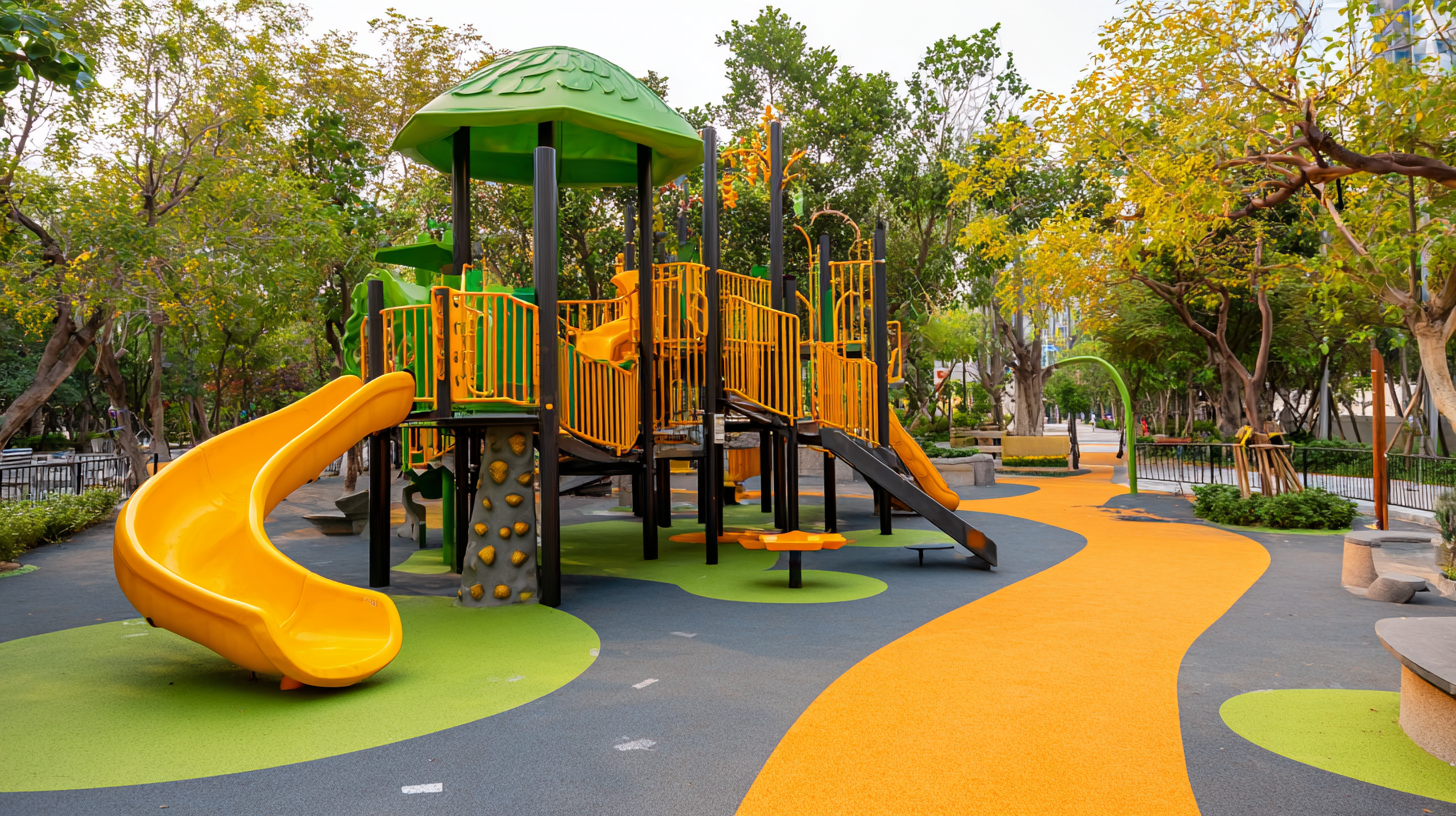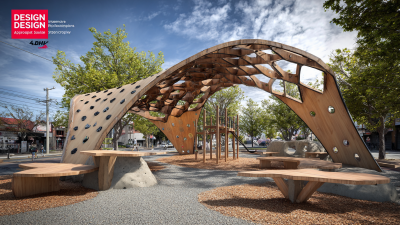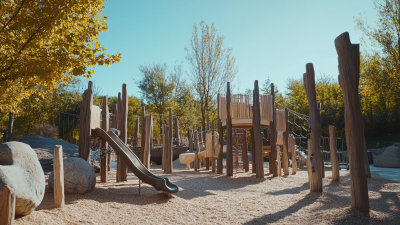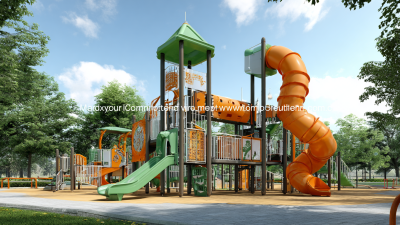
Inquiry
Form loading...
Creating an engaging outdoor playground design for children is crucial in fostering not only their physical development but also their social skills and cognitive abilities. According to a report by the National Association for the Education of Young Children (NAEYC), high-quality playground environments can significantly enhance children's learning experiences, contributing to their overall well-being and creativity. Moreover, research indicates that children who engage in play that encourages exploration and interaction with peers develop better problem-solving skills and emotional intelligence. The American Academy of Pediatrics states that active play in outdoor spaces is associated with improved physical fitness and lower rates of childhood obesity. As such, incorporating essential elements into outdoor playground design—such as varied equipment, natural elements, and safe play areas—ensures that children are provided with meaningful opportunities to learn, grow, and thrive through play, creating a foundation for lifelong health and happiness.

Creating an engaging outdoor playground design for children involves understanding and implementing key elements that foster creativity, physical activity, and social interaction. According to the National Association for Sport and Physical Education, children need at least 60 minutes of physical activity each day. Therefore, a well-designed playground should include a variety of equipment that encourages movement—such as climbing structures, swings, and slides. Incorporating natural elements like trees, bushes, and grassy areas not only enhances play but also contributes to children's connection with nature.
Tips: Consider using open spaces that allow for different types of play, including free play, which is essential for cognitive and social development. Facilities for organized sports can also encourage teamwork and communication among children. Additionally, providing shade through trees or structures is crucial, as studies show that shaded play areas can increase play duration and participation by up to 30%.
Moreover, inclusivity should be a priority in playground design. The Centers for Disease Control and Prevention reports that approximately 1 in 6 children have a developmental disability, making it vital to incorporate equipment that accommodates all abilities. Features like wheelchair-accessible ramps, sensory play panels, and safe surfacing materials ensure that every child can enjoy the benefits of play, promoting a sense of belonging and community.

Incorporating natural elements into outdoor playground design significantly enhances children's play experiences by fostering creativity and promoting physical activity. According to the 2020 National Recreation and Park Association (NRPA) report, nature-based play areas can increase children's overall activity levels by up to 40%. Elements such as trees, boulders, and water features not only provide diverse sensory experiences but also inspire imaginative play. Children are more likely to engage in cooperative activities and explore their environment when natural elements are present, as they encourage unstructured, organic interactions that are vital for social development.
Moreover, research from the American Journal of Play suggests that access to natural play spaces positively impacts children's cognitive development, emotional well-being, and resilience. Integrating features like gardens or natural climbing structures helps to cultivate an appreciation for the environment while promoting problem-solving skills through exploratory play. As parents and community planners aim to create engaging outdoor playgrounds, leveraging nature can transform traditional playgrounds into dynamic learning environments that support children's holistic development. By prioritizing these natural elements, we can create playgrounds that not only entertain but also educate and inspire children to connect with the world around them.
| Element | Description | Benefits |
|---|---|---|
| Natural Play Structures | Using logs, boulders, and other natural materials to create climbing and balancing features. | Encourages physical activity, improves balance, and enhances risk-taking in a safe environment. |
| Gardening Areas | Designated spaces for children to plant and care for flowers and vegetables. | Teaches responsibility, patience, and promotes understanding of nature. |
| Water Play Features | Incorporating streams, fountains, or splash pads for interactive play. | Offers sensory experiences, fosters creativity, and provides cooling activities during summer. |
| Shade Structures | Using trees, trellises, or canopies to provide shaded areas for rest and play. | Protects children from sun exposure and encourages longer outdoor playtime. |
| Adventure Trails | Paths through natural settings with different terrains and challenges. | Promotes exploration, physical fitness, and an appreciation of nature. |
When designing an engaging outdoor playground for children, selecting safe and durable equipment tailored to various age groups is of utmost importance. For younger children, equipment should feature soft surfaces and should be low to the ground to mitigate the risk of injuries. Items such as slides with gentle slopes, small climbing structures, and swings with safety harnesses are ideal for toddlers and preschoolers. The materials used should be non-toxic and have rounded edges to ensure that they are safe for small children who are naturally curious and tend to explore their environment.
As children grow older, their play needs and abilities change. For older children, playground equipment can be more challenging and invigorating. Elements like rope climbing structures, interactive gaming panels, and obstacle courses can promote physical activity and help develop motor skills. It is crucial that this equipment is made from sturdy materials that can withstand the wear and tear of active play, providing a safe environment for children of all ages. By thoughtfully selecting equipment that caters to different developmental stages, playgrounds can engage children effectively while ensuring their safety.
Creating outdoor playground designs that foster social interaction among children is essential for their development and well-being. Recent trends emphasize the importance of interactive spaces that not only engage children physically but also enhance their social skills. The emphasis on community-centric designs reflects a broader shift in architecture towards creating environments that encourage playful interactions within public spheres. According to reports, up to 75% of children in urban areas have limited access to recreational spaces, making the design of such facilities all the more critical.
To cultivate these interactive environments, designing with the user experience in mind is vital. This includes integrating augmented play spaces that merge physical play areas with digital elements for an immersive experience. Such designs can draw on principles from placemaking, where the focus is on developing areas that promote human interaction and creativity. By fostering links between children through shared play experiences, these spaces can reduce individualization and encourage cooperative play, which is crucial for developing social skills. As observed in recent studies, environments that promote collaboration can lead to a significant increase in the quality of social interactions among children, highlighting the necessity of thoughtful design in outdoor playgrounds.

Creating unique themes in outdoor playground design can profoundly influence children's imaginative play. By integrating vibrant colors, engaging structures, and familiar characters, these themed areas can transport children to fantastical worlds where their creativity knows no bounds. For instance, a "Rainforest Adventure" theme could include climbing structures designed as trees, slides representing waterfalls, and interactive animal sculptures that promote exploration and storytelling.
Moreover, incorporating diverse play elements inspired by popular culture, such as beloved animated characters or imaginative landscapes, further enhances children's experiences. Play spaces that mimic settings like the "Minion Land" or a whimsical "Underwater Kingdom" not only attract children’s attention but also encourage group play and social interaction. This thematic approach ensures that each visit to the playground feels like a new adventure, allowing children to engage in role-playing and collaborative storytelling that sparks their imagination and fosters a love of creative exploration.






